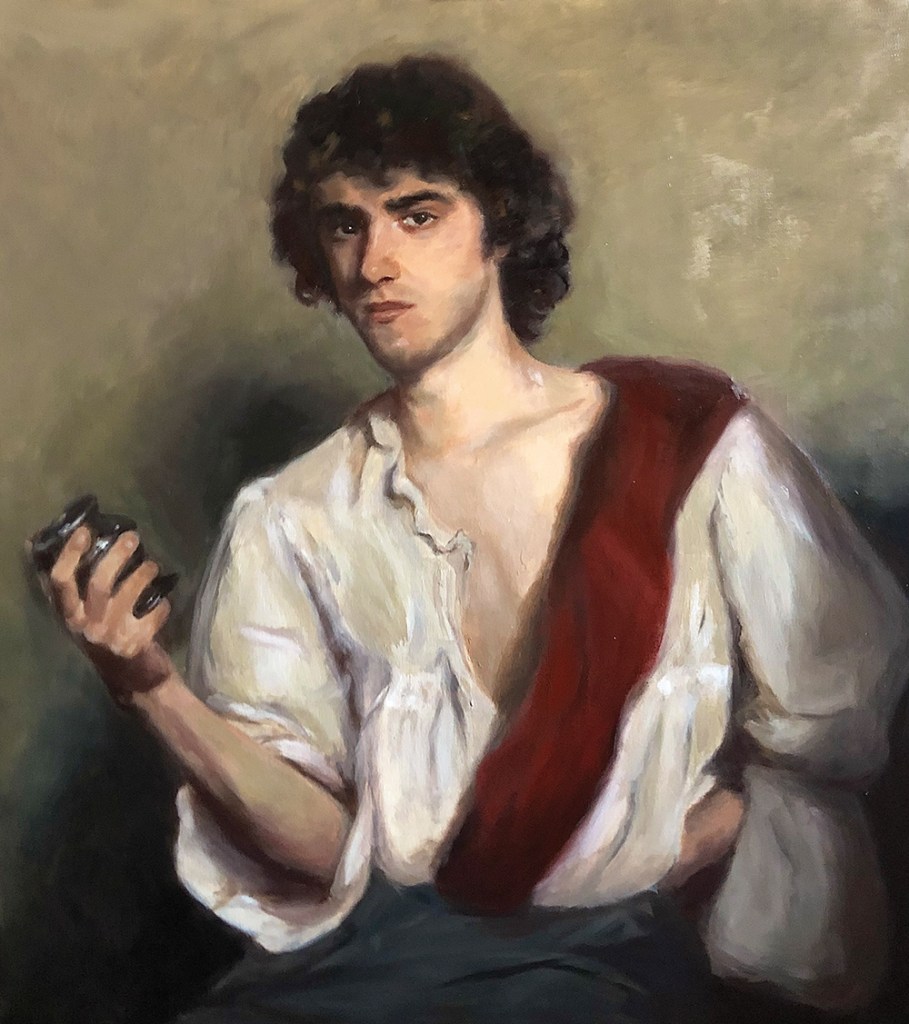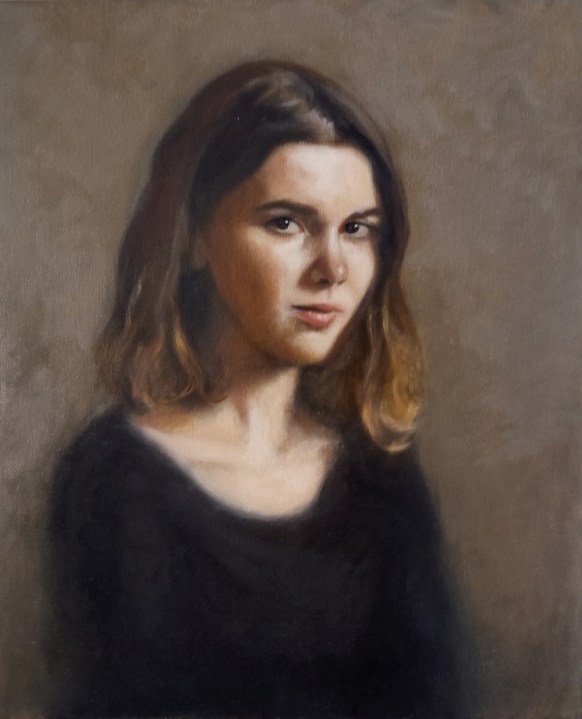The art school at Marlborough looks different. When I was a pupil here in the mid-2000s, conceptual art was cool. Back then, art meant spray-painting a canvas with neon graffiti or making a sculpture out of rubbish. The art school would have been covered in all sorts of zany efforts at abstraction. What there would not have been, however, was much portraiture. And certainly not the abundance of remarkable portraits that now fill the walls. Something has changed.
This newfound enthusiasm for portraiture among Marlborough’s pupils is, in large part, thanks to a 25-year-old portrait artist, Grace Payne-Kumar, the college’s artist in residence since September 2023. For many years, Marlborough has hosted resident artists, encouraging them to pursue their own work while also inspiring and teaching students.
I meet Grace in her studio, a beautiful well-lit space above the school’s Mount House, a Grade II-listed Georgian building that serves as a gallery where students, teachers and the wider community can view artwork by pupils and visiting artists. Grace’s studio is filled with portraits. Some are unfinished; all are compelling. I notice a few are turned upside down. ‘It helps me see them with fresh eyes when I come back to them,’ she explains. ‘If you stare at something for too long, you lose that perspective.’
Grace’s work builds on the rich tradition of European portraiture, a discipline she learnt at the Charles H. Cecil Studios in Florence, where she was trained in the ‘sight-size’ method. This technique, once employed by masters such as Joshua Reynolds, Thomas Lawrence and John Singer Sargent, involves placing the subject and the canvas side by side to achieve exceptional accuracy in proportion and likeness. It remains a cornerstone of classical art atelier training – a legacy that Grace is now passing on to Marlborough’s students.
‘Pupils here are encouraged to try every-thing,’ she says. ‘You can go to the observatory and see the stars. You can go trout fishing in the pond. You can come up here and try sight-size painting.’ Judging by the number of portraits lining the walls, it’s clear the method has captivated Marlborough’s pupils. For students pursuing art at A-level or GCSE, or even those intrigued by the techniques of classical portraiture, Grace provides expert guidance. ‘It’s like a mini-Charles Cecil,’ she says. ‘A taste of atelier training.’
‘Some come to the studio not only to paint but to decompress. Art is a huge stress reliever’
The results are striking. ‘The pupils are creating so much work, which is wonderful to see,’ Grace notes. ‘As a teacher, it’s rewarding to watch their progress. Some come to the studio not only to paint but to decompress. Art is a huge stress reliever. It’s also incredibly fulfilling to see students who wouldn’t usually have gravitated towards art slowly gain confidence as they explore different techniques.’
Grace runs weekly life-drawing classes and even introductory lessons for parents and children. Most days, she has a model in her studio (a portrait normally requires multiple sittings) and students are encouraged to work alongside her. ‘That’s how it’s done in ateliers,’ she says. She is also eager to share her expertise. ‘Last year, I worked with a student whose project was inspired by Titian. We explored his techniques, did some paint grinding, and discussed his methods in depth.’
She is keen to make portrait painting seem a viable career path. I suggest that it must be inspiring for pupils to see a successful portrait artist who is only a few years older than themselves. ‘I suppose it makes it feel more accessible,’ she says. ‘Like they could follow a similar route.’
When she isn’t teaching, Grace focuses on her own commissions – and demand is high. In 2019, she was a finalist for the Scottish Portrait Awards and won the Members’ Choice Award. A prestigious commission followed: the official portrait of Lady Dorrian, Scotland’s first female Lord Justice Clerk, which was unveiled in Parliament Hall in 2022. She was also commissioned to paint Jamini Sen, a pioneering surgeon and the first female Fellow of the Royal College of Physicians and Surgeons of Glasgow.

Her portraits now hang alongside those of Sir Henry Raeburn and Singer Sargent – a fact she takes pride in. ‘Sargent is my biggest influence,’ she says. ‘I introduce his work to students to explain the Italian concept of “sprezzatura” or “studied nonchalance”.’ I find this amusing, ‘studied nonchalance’ somewhat encapsulating the Marlburian attitude to life.
While Grace’s portrait style is rooted in tradition, her choice of subjects is refreshingly modern. Her heritage – British, Indian and Kiwi – shapes her artistic vision. ‘That mix is a huge part of who I choose to paint and represent,’ she says. During the school holidays, she has travelled to India and Mexico, expanding her knowledge of global portraiture styles.
English portraiture has historically been ‘commissioned by aristocracy’. ‘I enjoy using old master techniques to depict people from diverse backgrounds in terms of race and gender.’ She gestures to a portrait of the school’s Mandarin teacher, her pearl-embellished cardigan painted with Vermeer-like precision. Another work in progress is a portrait of Satish Kumar, the Indian-British activist and monk. There is nothing staid about Grace’s work; she has made classical portraiture feel youthful, modern and relevant. No wonder the pupils love it.
Grace’s tenure as artist in residence will conclude at the end of the school year, after which she plans to move to London to continue her career. Her presence will no doubt be missed. But if the walls of Marlborough’s art school are anything to go by, her influence will endure.








Comments